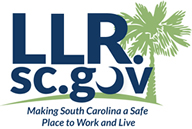Hello REALTORS®,
Signs and sign ordinances can be beneficial to Realtors, but they also come with responsibility. Over the last several years, your REALTORS® Association successfully lobbied across the Western Upstate for protection of signs that communicate that real property is for sale while local sign ordinances were updated.
A decade ago, the U.S. Supreme Court ruled in a Gilbert, Arizona, case that signs are protected speech. The Gilbert case related to an exemption for political signs, but most sign ordinances specifically exempted certain types of signs, like political and real estate signs. Those exemptions related to what the sign said, and the Supreme Court ruled that violates the First Amendment protection of speech.
That ruling made it more challenging to protect real estate signs, but for the most part the new ordinances continue to protect real estate signs.
It is important that real estate professionals comply with local sign ordinances. Most of them allow a small sign on the property that is for sale. Some ordinances allow real estate professionals to post similar-sized lead in signs for a few hours during an open house.
On the commercial side, larger signs are allowed and if the property has multiple road frontages, more than one sign is allowed. Most of the ordinances I have worked on state that when the property is no longer available for sale or rent, the sign must be removed.
Local code enforcement officers have asked me to share with you that it is important that signs be posted legally. Nearly all ordinances say something like this:
- For residential property, one sign (two if the house is on a corner), 4-6 square feet, on the property available for sale or rent.
- For commercial property, one sign (two or more if the property has multiple road frontages), 16-32 square feet, on the property available for sale or rent.
- Some, but not all, ordinances allow lead-in signs for a few hours, usually on the weekends. But posting signs off the property for weeks at a time is a recipe for the signs to be confiscated, and a possible fine for the owner of the sign.
- All signs should come down when the property is rented or sold. That means the big commercial listing signs too.
The larger concern is if real estate professionals don’t comply—we could face proposals to take away your ability to use signs. Local government officials complain to me that real estate signs seem to remain up long after the property is leased or sold, and they litter every corner in town.
What you can do
Signs are an important way that Realtors communicate that property is available for sale or lease. Please do your part to protect Realtors’ ability to use signs by removing them after the property is sold or leased and take down open house lead in signs immediately after the open house.
RPAC is Important
If real estate is your profession, advocacy is your business. And our advocacy results highlight the importance of supporting your association’s advocacy program. RPAC is an important element of that advocacy program.
About one-third of our members support RPAC, including some who do more—a lot more.
One member who has done a lot more is Andy Lee of Lake Keowee Real Estate in Seneca. Andy is a Major Investor, which means he contributes to RPAC at the $1,000 level each year. Andy is also a member of the NAR RPAC Hall of Fame, having contributed more than $25,000 to RPAC during his career in real estate. Thank you, Andy, for your leadership in supporting RPAC.

I encourage all Realtors to support RPAC, and we make it easy to do so. We include a voluntary $25 RPAC contribution ($100 for brokers) on your annual dues renewal. Simply pay it and you have supported RPAC. If you want to do more, that’s easy too.
Michael Dey, Director of Government Affairs



